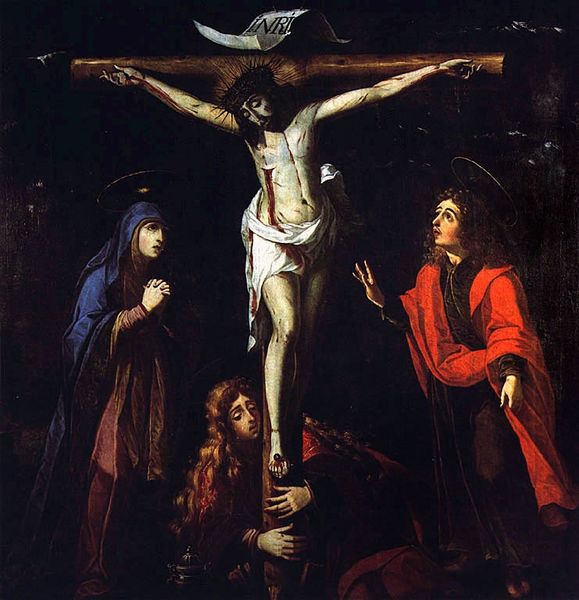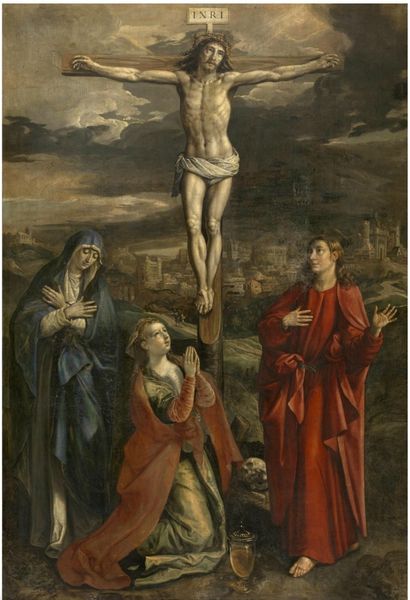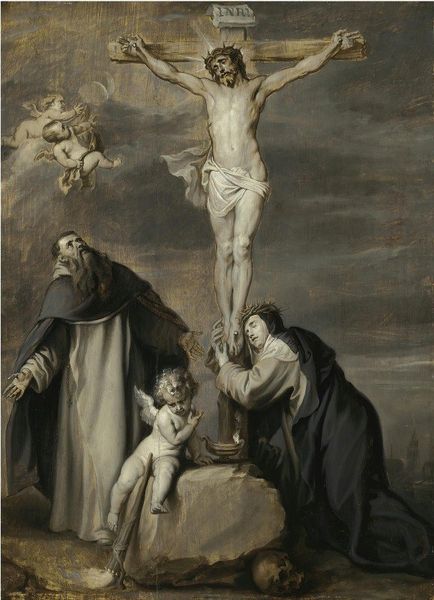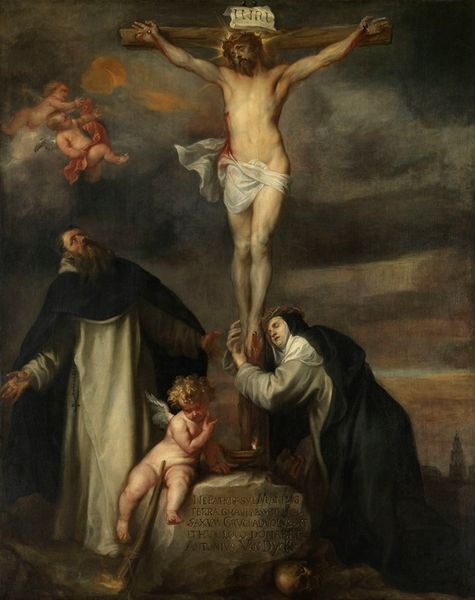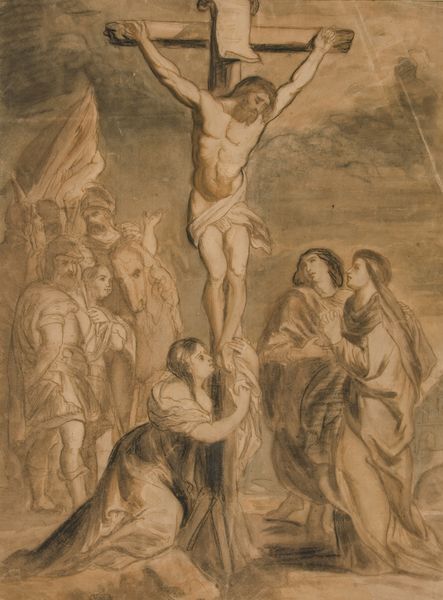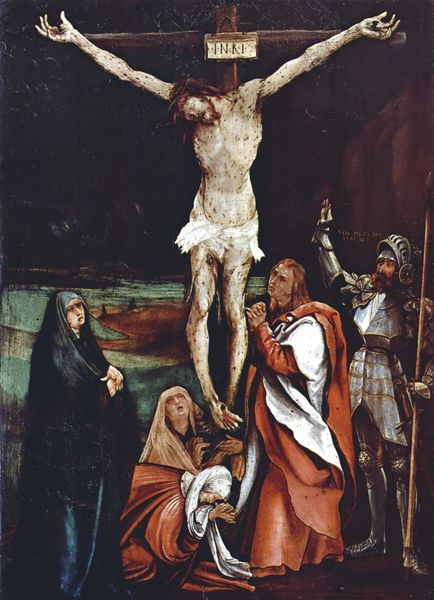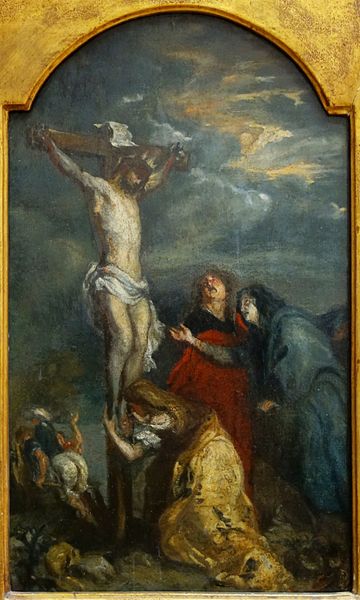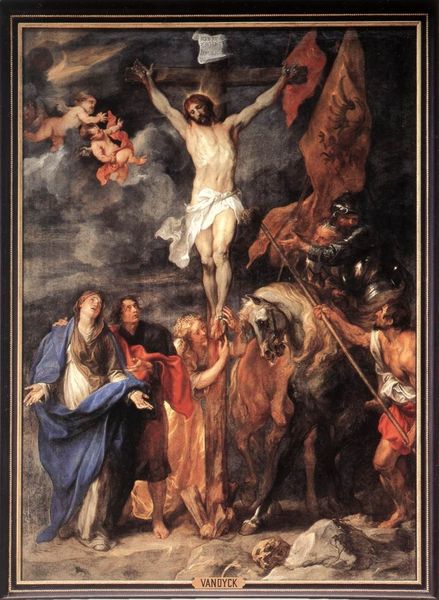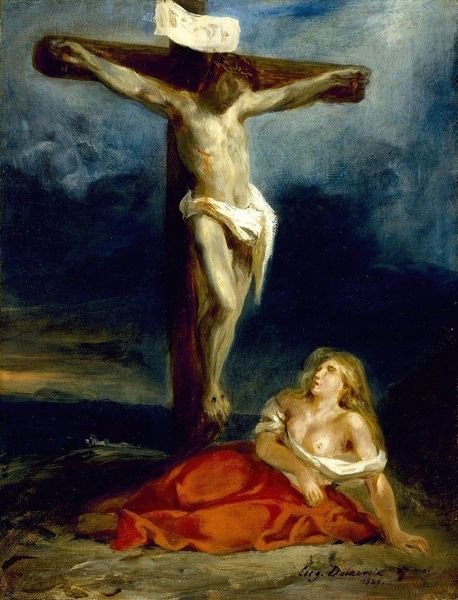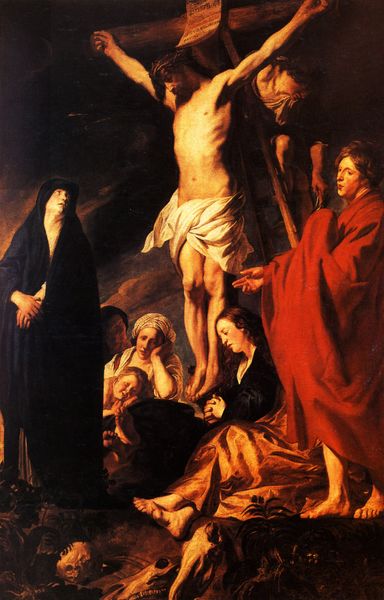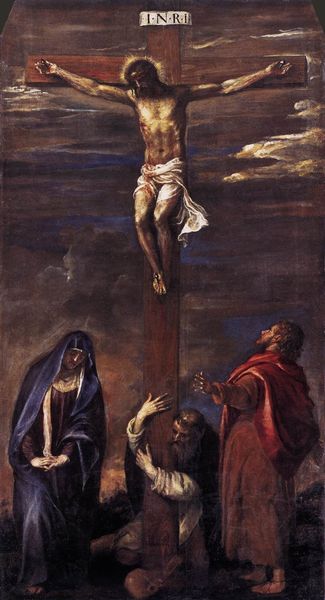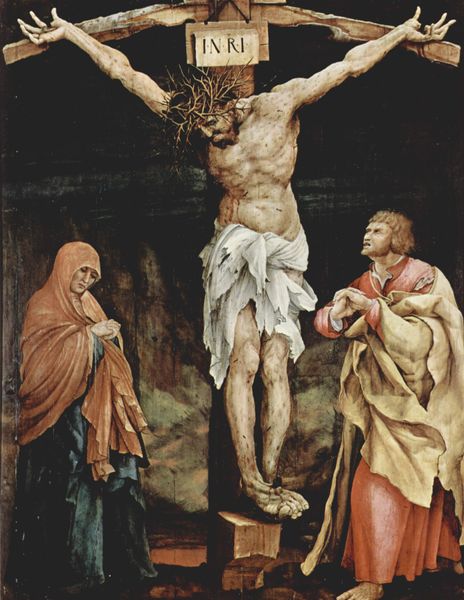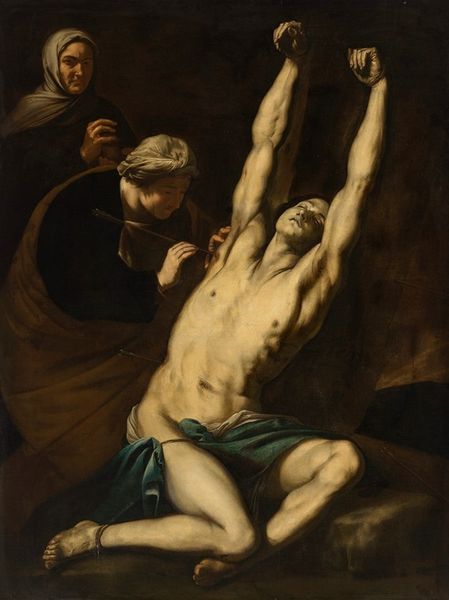
painting, oil-paint
#
baroque
#
painting
#
oil-paint
#
figuration
#
oil painting
#
history-painting
#
realism
Dimensions: 73 x 56.79 cm
Copyright: Public domain
Curator: Gabriel Metsu's “Crucifixion,” completed around 1665, offers a powerful depiction of this pivotal biblical scene. What's your initial reaction? Editor: It's overwhelmingly dark, not just literally with the heavy use of shadows, but emotionally as well. The figures clustered at the base of the cross look devastated, consumed by grief and despair. Curator: Metsu painted during the Dutch Golden Age. History painting like this was quite significant in publicly promoting moral values, wasn’t it? And as such, the depiction of Christ served as a powerful exemplar. Editor: Exactly. It is crucial to unpack how historical narratives around masculinity are interwoven into religious iconography. Think about how Jesus’ suffering and sacrifice reinforces idealized, but unattainable, traits. There's something insidious about that. Curator: Tell me more about your observations on how those concepts function here. Editor: It seems as though his physical vulnerability, laid bare, contrasts so starkly with the strength this figure symbolizes. Is the pain and humility depicted intended to provoke reverence, fear, or maybe something else? And what are we to make of these responses in the other figures within the canvas? Are they simply meant to model pious behavior? Curator: That's a great point. The raw emotion he captured in those figures – particularly in the Magdalen’s posture and expression – is particularly arresting. The way the light falls across her is intriguing. The inclusion of the skull at the base suggests awareness of human mortality. These theatrical elements tap into deep emotional reservoirs. Editor: It's interesting how he blends realism with such high drama. The historical and cultural contexts shaping the perception of sacrifice and power here feel crucial, because the emotional complexities the artwork taps into can only be understood when examining that context. Curator: That’s a thoughtful perspective on what might have motivated this specific artwork. Editor: Precisely. Thank you for giving voice to that in this dialogue. Curator: My pleasure. This painting provides insight into religious history as it interfaces with art and its display.
Comments
No comments
Be the first to comment and join the conversation on the ultimate creative platform.

